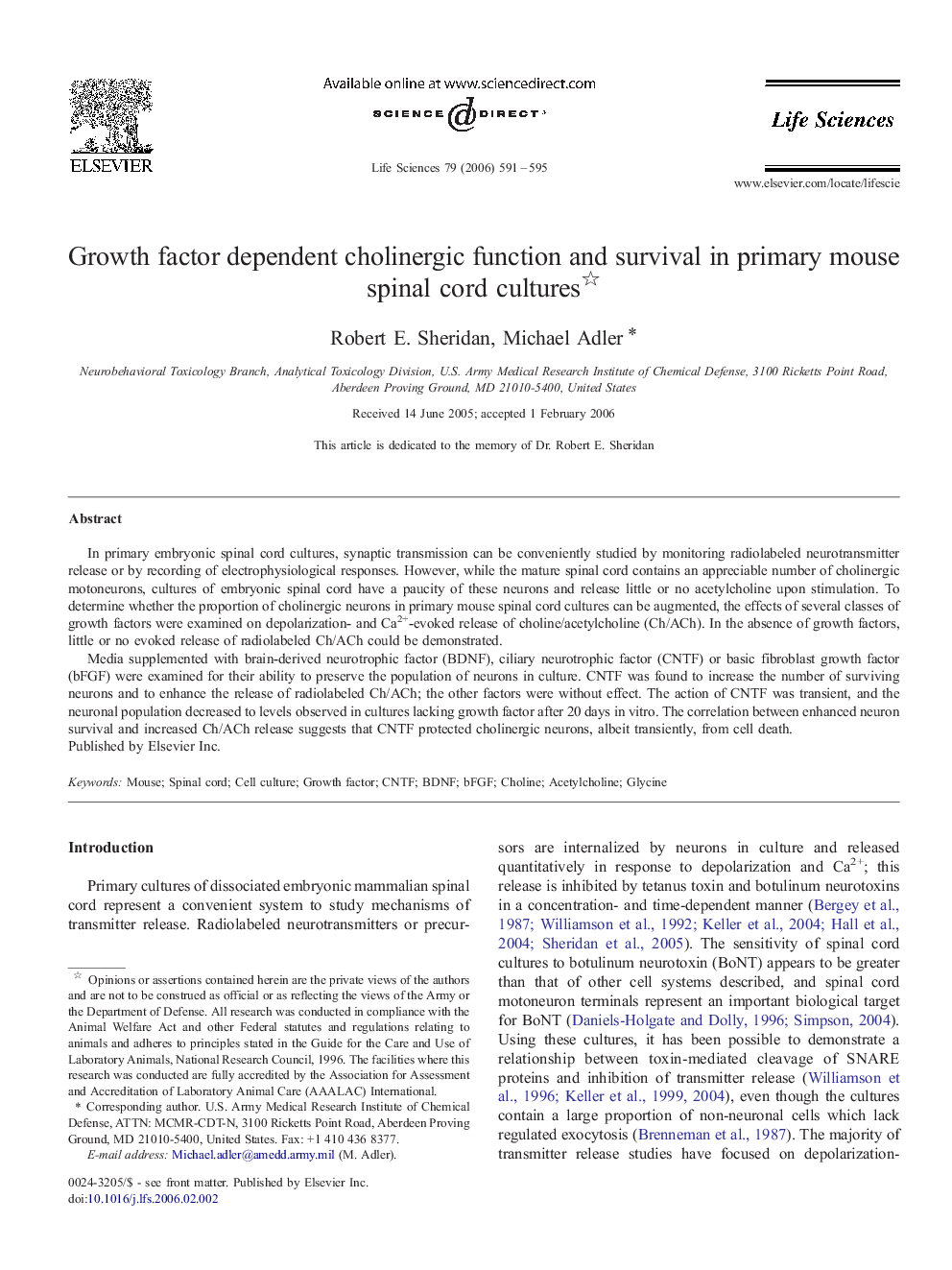| Article ID | Journal | Published Year | Pages | File Type |
|---|---|---|---|---|
| 2554201 | Life Sciences | 2006 | 5 Pages |
In primary embryonic spinal cord cultures, synaptic transmission can be conveniently studied by monitoring radiolabeled neurotransmitter release or by recording of electrophysiological responses. However, while the mature spinal cord contains an appreciable number of cholinergic motoneurons, cultures of embryonic spinal cord have a paucity of these neurons and release little or no acetylcholine upon stimulation. To determine whether the proportion of cholinergic neurons in primary mouse spinal cord cultures can be augmented, the effects of several classes of growth factors were examined on depolarization- and Ca2+-evoked release of choline/acetylcholine (Ch/ACh). In the absence of growth factors, little or no evoked release of radiolabeled Ch/ACh could be demonstrated.Media supplemented with brain-derived neurotrophic factor (BDNF), ciliary neurotrophic factor (CNTF) or basic fibroblast growth factor (bFGF) were examined for their ability to preserve the population of neurons in culture. CNTF was found to increase the number of surviving neurons and to enhance the release of radiolabeled Ch/ACh; the other factors were without effect. The action of CNTF was transient, and the neuronal population decreased to levels observed in cultures lacking growth factor after 20 days in vitro. The correlation between enhanced neuron survival and increased Ch/ACh release suggests that CNTF protected cholinergic neurons, albeit transiently, from cell death.
